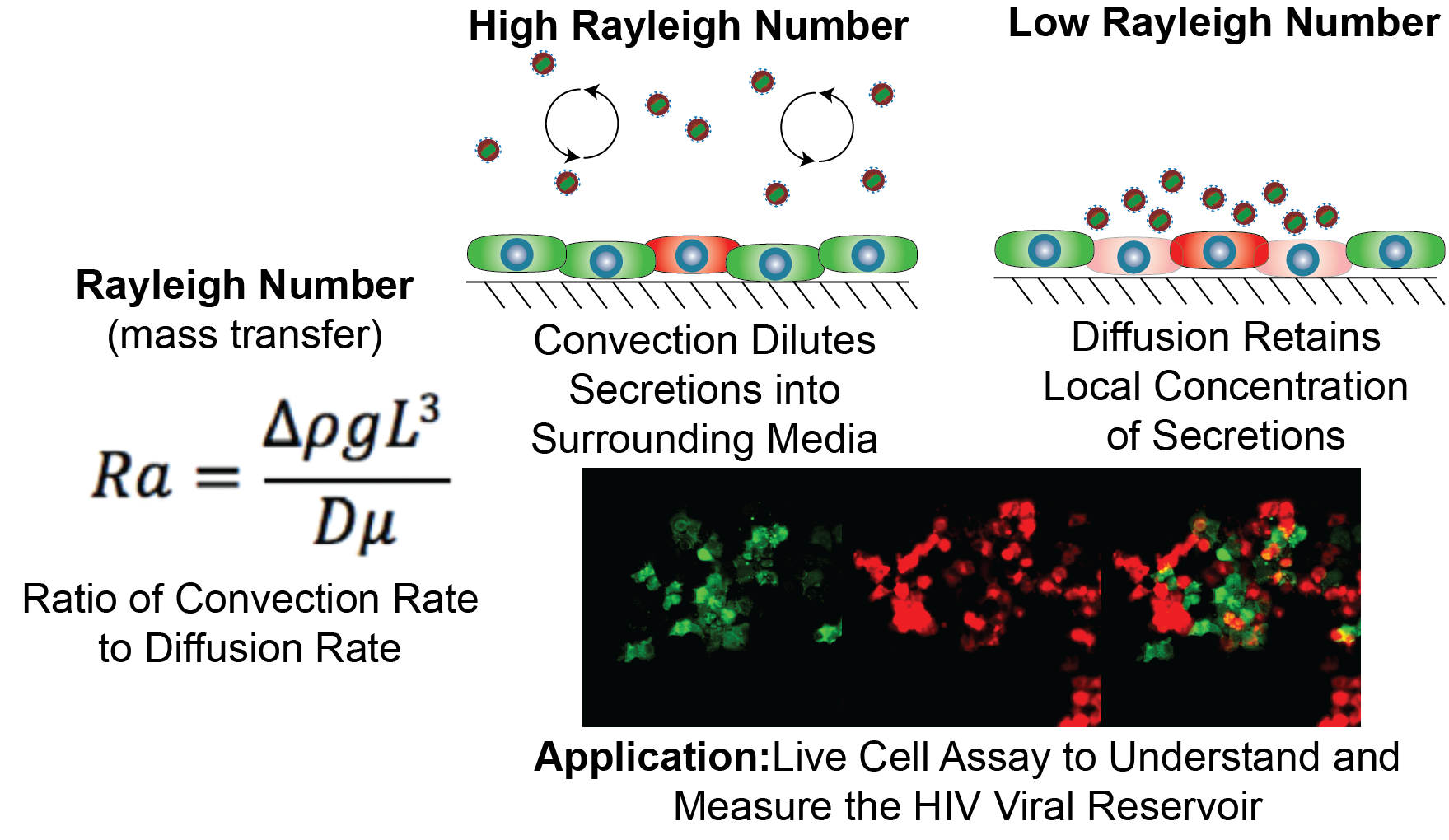At the Advanced Diagnostics Lab, we aim to develop new diagnostic technologies by applying fluidic scaling laws. Over the past several years, miniaturization has emerged as a trend in assay development, and has largely been implemented with the goals of reducing costs, accelerating throughput, and conserving precious samples or reagents. While significant, these achievements represent incremental improvements to the state-of-the-art, rather than transformative gains in capability. However, as described in more detail below, the physical science scaling phenomena associated with miniaturization can also enable fundamentally new functionalities in molecular analytical processes.
When bond number is reduced, the effects of surface tension dominate over gravity. This allows us to position immiscible fluids in orientations that are not limited to gravitational stratification. Further, we have demonstrated that the surface tension associated with a phase interface can be effectively utilized as a simple bimolecular filter. Using this principle, we are able to purify an analyte-of-interest (HIV nucleic acid in this case) from a clinical sample in a low cost and near-instantaneous manner.

Cellular behavior is largely governed by the interactions between biomolecules and mapping of this “interactome” is a key milestone in our pursuit of understanding cellular behavior. However, many important interactions are weak and transitory and are therefore difficult to measure. Fortunately, when molecules are concentrated, chemical equilibrium dictates that interactions between molecules will increase. Thus, by combining miniaturization (concentration) with rapid separations technologies, we are able to observe interactions that were previously “invisible” with other technologies.

The transportation of a factor (e.g., cytokines, viruses, exosomes) between non-contacting cells is governed by the fluid located between the cells. Through modulation of the mass transport Rayleigh number, we can create regions where fluid convection is high and others where convection is negligible, leaving diffusion to dominate transport. We have found that diffusion-dominant regions exhibit faster/stronger signaling, due in part to the absence of dilutive convection currents. Here, we use this principle to increase the sensitivity of assay designed to qualify the viral reservoir within patients infected with HIV.


